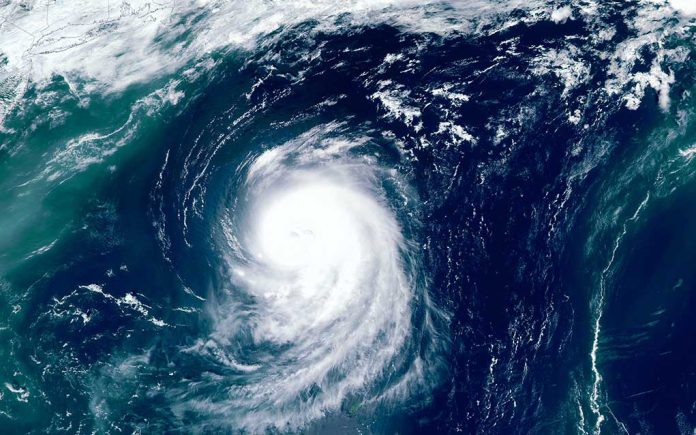
President Trump’s strategic NOAA staff reassignment targets critical National Weather Service shortages, prioritizing public safety despite budget constraints that have raised concerns among meteorologists about potential gaps in America’s weather forecasting capabilities.
Key Takeaways
- Trump administration is reassigning NOAA staff to fill 76 critical National Weather Service positions, focusing on regions vulnerable to natural disasters
- The NWS currently faces a concerning 19% vacancy rate with some offices critically understaffed, potentially affecting weather forecasting capabilities
- Critics warn that internal staff shifts may compromise NOAA’s overall operational effectiveness while documents suggest substantial budget cuts are forthcoming
- Historical weather forecasting advances have saved thousands of lives and billions of dollars, benefits that could be jeopardized by continued staffing shortages
- At just $4 per American annually, the NWS provides exceptional return on investment while facing increasing challenges from extreme weather events
Addressing Critical Weather Service Shortages
The Trump administration has initiated a strategic reassignment of staff across the National Oceanic and Atmospheric Administration (NOAA) to address severe staffing deficiencies within the National Weather Service. This move comes as the NWS faces a troubling 19% vacancy rate nationwide, with some local offices operating with bare-bones staffing during a period of increasingly extreme weather events. The priority is filling 76 positions in areas most vulnerable to natural disasters, ensuring Americans receive vital weather warnings that can save lives and property.
While NOAA spokesperson Monica Allen has been reticent about specifics of the personnel shifts, she has emphasized the agency’s unwavering commitment to public safety. This reassignment approach represents a practical solution to immediate staffing needs while the administration works on longer-term structural improvements to weather service operations. The focus remains on maintaining essential forecasting capabilities despite inherited staffing and budget challenges from previous administrations.
Historical Context and Public Safety Concerns
The critical nature of weather forecasting cannot be overstated. The 1925 Tri-State Tornado, which claimed 695 lives due to a lack of warning systems, serves as a stark reminder of what’s at stake. Modern weather forecasting infrastructure has dramatically reduced such casualties, demonstrating the life-saving value of proper NWS funding and staffing. The Trump administration recognizes this reality and is working to ensure no American community is left vulnerable due to staffing shortages.
“Our worst nightmare is that weather forecast offices will be so understaffed that there will be needless loss of life,” wrote five former NWS directors in an open letter expressing their concerns about current staffing levels.
This statement underscores the real-world implications of weather service shortages. The administration’s reassignment strategy aims to prevent such scenarios by ensuring meteorologists are stationed where they’re most needed. Critics like Rep. Zoe Lofgren have raised concerns that these internal shifts could weaken NOAA’s overall capabilities, but the administration maintains that protecting Americans from severe weather must take precedence over other agency functions during this staffing transition.
Budget Efficiency and Economic Impact
The National Weather Service represents one of the federal government’s best investments, costing each American roughly $4 annually while delivering substantial economic benefits. The service prevents billions in damage through accurate forecasts that allow for preparation and evacuation when necessary. Staffing shortages have already impacted some operations, with fewer weather balloon launches and concerns about the maintenance of essential forecasting equipment like Doppler radar systems.
“We have a more efficient level of staff compared to the number of people we’re serving than any other country in the world by two orders of magnitude,” stated Louis Uccellini, highlighting the service’s remarkable efficiency.
While budget documents suggest potential financial cutbacks may be forthcoming, the Trump administration’s approach prioritizes maintaining core forecasting capabilities that directly protect American lives. Operational efficiencies will need to be found, but the administration has signaled its commitment to preserving essential weather services while eliminating waste and bureaucratic excess that accumulated under previous leadership. The temporary staffing reassignments represent a pragmatic response to immediate needs while longer-term reforms are developed.
Moving Forward
The administration’s approach to weather service staffing reflects President Trump’s commitment to an efficient government that delivers essential services to Americans. By focusing limited resources on the most critical forecasting needs, particularly in disaster-prone regions, the administration is working to maximize public safety despite inherited staffing challenges. The NWS will continue to fulfill its core mission while the administration addresses the structural issues that led to the current staffing deficits.
“The net result is going to be massive economic harm,” said Daniel Swain, expressing concerns about the potential impacts of staffing shortages.
While such warnings highlight legitimate concerns, they fail to acknowledge the administration’s targeted approach to ensure essential forecasting continues uninterrupted. The Trump administration remains committed to public safety while pursuing responsible fiscal management of government agencies. As staffing reassignments progress, Americans can expect continued delivery of the life-saving weather forecasts they depend on, particularly in regions most vulnerable to severe weather events and natural disasters.







